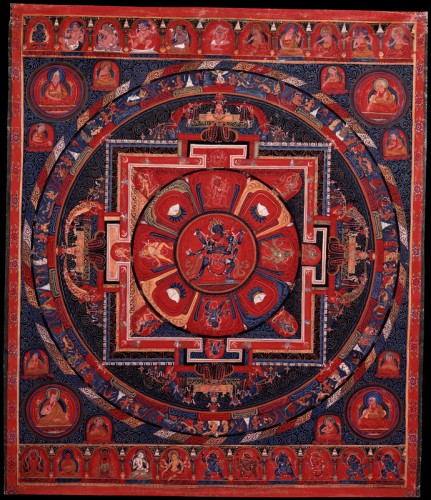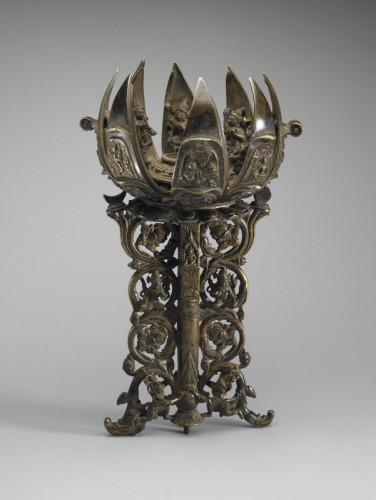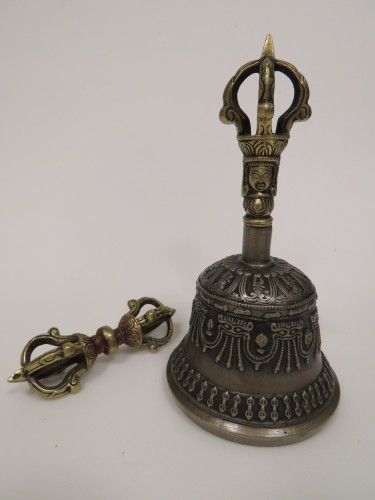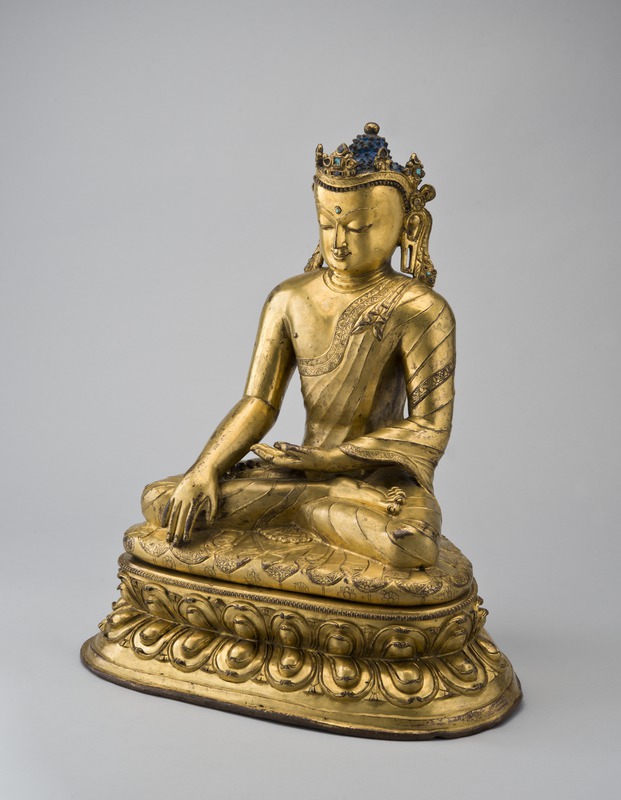
This week, for Brainwave 2016: Emotion, we’re addressing anxiety and its role in everyday life.
Anxiety is a strong feeling of worry or mental distress; it is considered to be an essential, healthy emotion when occurring in moderation and helping people complete important tasks. However, according to the National Institute of Mental Health, approximately 18% of U.S. adults suffer from an anxiety disorder, characterized by an overwhelming amount of anxiety that disrupts everyday life instead of aiding it. Even for those without a disorder, anxiety can mount up during particularly stressful periods and life events. In fact, it’s been observed that 77% of people in the U.S. regularly experience physical symptoms caused by stress.
At our weekly Mindfulness Meditation program, meditation teachers like Sharon Salzberg and Tracy Cochran draw inspiration from the art in the Rubin’s galleries to illustrate lessons on mindfulness, which can help calm an anxious mind. For those who struggle with anxiety, or are in need of some insight, check out three lessons we’ve learned from mindfulness meditation leaders at the Rubin:
1) Tracy Cochran: “When you notice that the thoughts are sweeping you away, gently bring the attention home again”¦ to the center”

During Tracy Cochran’s recent session, she focused on the physical and emotional control which meditation provides. Like practitioners have been doing for centuries, modern mindfulness meditators focus their minds by “pulling it back to the center” in an attempt to achieve stability.
This 15th century Mandala is a representation of a cosmic palace. Practitioners use the mandala as a means to lay a path for their meditation, mentally building the palace and moving through it. Eventually, practitioners will visualize themselves at the center of the mandala, becoming one with the enlightened deities that live there.
Hear Tracy Cochran‘s full talk and guided meditation below:
2) Sharon Salzberg: “Out of the turmoil”¦ the uncertainty”¦ the greatest gifts can arise.”

When Sharon Salzberg led a session at the Museum earlier this month, she discussed the Lotus Mandala sculpture in the Rubin collection to demonstrate how beauty and growth can develop from the darkest of places.
The lotus is a potent symbol in both Hinduism and Buddhism. Growing in ponds and rivers, the roots of the lotus flower extend deep into the mud found in riverbeds. The stem of the flower rises from the muck and exists in murky dark waters. However once the stem reaches the surface of the water, it blooms into a beautiful flower.
Hear Sharon Salzberg’s full talk and guided meditation below:
3) Ethan Nichtern: “Every time we return to the breath”¦ it’s a way to drop concepts and come back to a direct body experience”

Last month, meditation leader Ethan Nichtern discussed the way that the mind wavers between direct sensory experiences and conceptual ones. When we are overcome with anxiety and fear, we lose touch with reality and focus heavily on hypotheticals and concepts. Nichtern explained that Buddhism’s focus on emptiness helps us uncomplicate the images and feelings that our mind can become obsessed with and connect more mindfully to our experiences.
Paired with a vajra, the tantric bell (ghanta in Sanskrit) is one of the most common ritual implements found throughout Himalayan Buddhism. Symbolically, the hollowness of the bell’s dome creates a visual representation of emptiness which Buddhism teaches as fundamental to the nature of all phenomena. It is this specific wisdom of emptiness that according to Buddhism is essential in producing enlightenment.
Hear Ethan Nichtern’s full talk and guided meditation below:
If you need a way to combat anxiety in your own life, join Sharon and other leaders at the Rubin Museum for our weekly meditation programs, or take the guided sessions with you on-the-go with our podcast.

